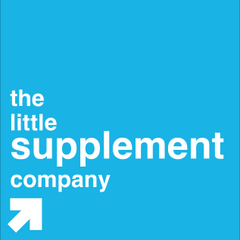Osteoporosis, bone health and supplements
Posted by Jordan Acheson on
Osteoporosis is a condition which predominantly affects the elderly and is characterised by a weakening of the bones which increases an individual's risk of fragility fractures. Whilst there are numerous factors which influence bone density, calcium and vitamin D deficiency is of high concern.
Vitamin D has many functions within the body, one of which is an aid for calcium absorption in the small intestine (Bringhurst et al., 2005). Adequate absorption of dietary calcium is essential to maintain blood calcium levels and prevent excessive amounts being drawn from bone tissue (Sunyecz, 2008). Therefore, the age related decline in gut function is an underlying mechanism of poor bone density as calcium malabsorption increases (Nordin et al., 1998).
Supplementation of calcium may be a viable method of decreasing osteoporosis risk by improving bone density (Shea et al., 2002). However, recent advances in the field have also highlighted the potential benefits of probiotic supplementation for bone health. Indeed, oral administration of Lactobacillus reuteri in postmenopausal women has been shown to increase tibial bone density (Nilsson et al., 2018). Moreover, Michaëlsson et al. (2018) studied the effect of high intake of fruits and vegetables in combination with fermented dairy products (i.e., yoghurt) in postmenopausal women. They observed that high absorption of symbiotics reduces the risk of hip fracture more than low intake of vegetables, fruit, and fermented milk.
High quality vitamin D, calcium and probiotic supplements are all available at The Little Supplement Company.
References
Bringhurst FR, Demay MB, et al. (2005) Harrison’s Principles of Internal Medicine. 16th ed. II. New York: McGraw Medical Publishing Division. Bone and mineral metabolism in health and disease; pp. 2246–9.
Michaëlsson, K., Wolk, A. et al. (2018), “Intake of milk or fermented milk combined with fruit and vegetable consumption in relation to hip fracture rates: a cohort study of Swedish women,” Journal of Bone and Mineral Research, vol. 33, no. 3, pp. 449–457.
Nilsson, A.G. Sundh, D., et al. (2018) “Lactobacillus reuteri reduces bone loss in older women with low bone mineral density: a randomized, placebo-controlled, double-blind, clinical trial,” Journal of Internal Medicine, vol. 284, no. 3, pp. 307–317.
Nordin, B.E.C., Need, A.G., et al. (1998). Nutrition, Osteoporosis, and Aging. Annals of the New York Academy of Sciences, 854(1 TOWARDS PROLO), pp.336–351. doi:10.1111/j.1749-6632.1998.tb09914.x.
Shea, B., Wells, G., et al. (2002). Meta-analyses of therapies for postmenopausal osteoporosis. VII. Meta-analysis of calcium supplementation for the prevention of postmenopausal osteoporosis. Endocrine reviews, 23(4), pp.552–9. doi:10.1210/er.2001-7002.
Sunyecz JA. The use of calcium and vitamin D in the management of osteoporosis. Ther Clin Risk Manag. 2008 Aug;4(4):827-36. doi: 10.2147/tcrm.s3552. PMID: 19209265; PMCID: PMC2621390.
Share this post
- 0 comment
- Tags: Keep healthy, osteoparosis, probiotics, Vitamin D
